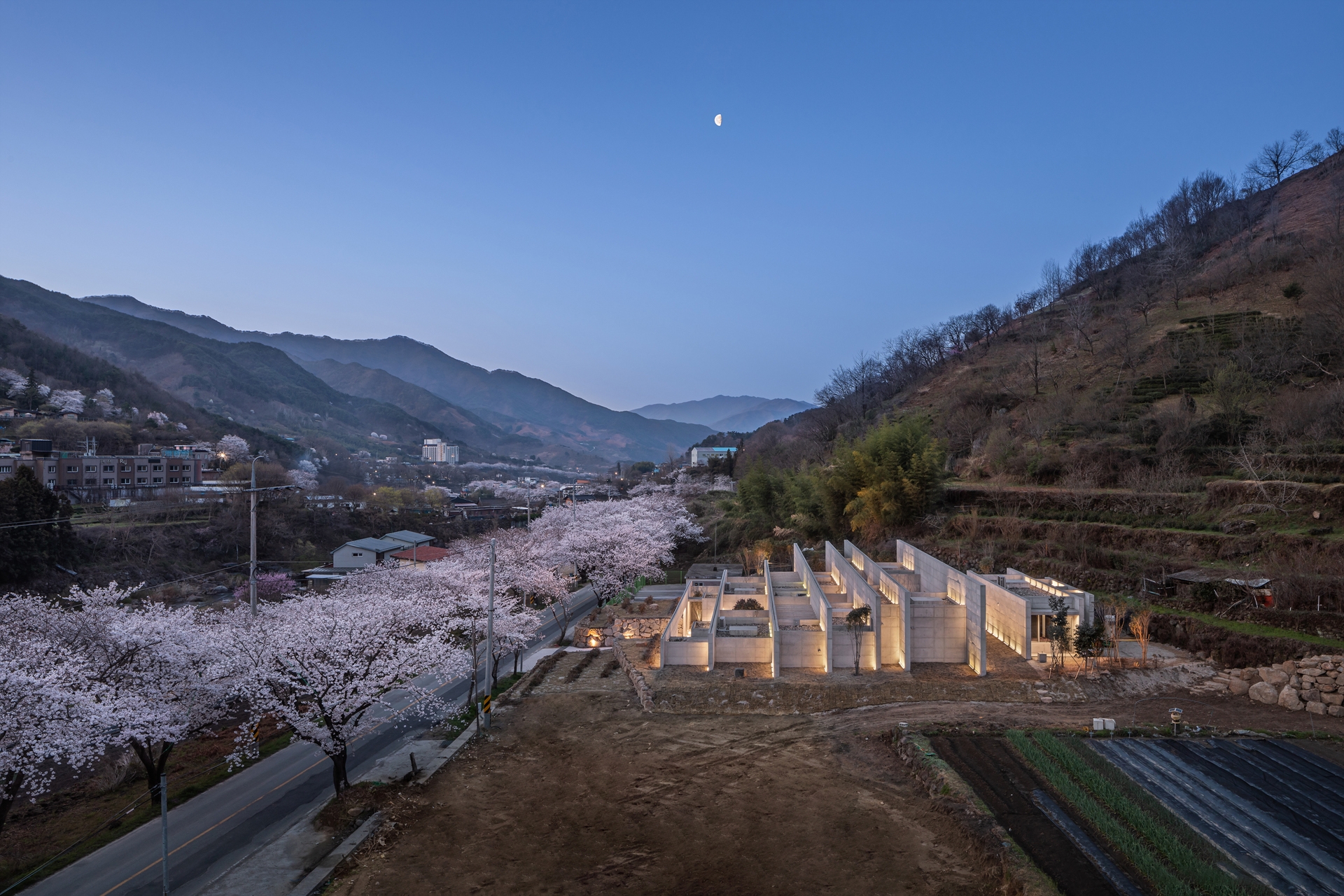
Yonggang-ri, Hwagae-myeon, Hadong-gun, Gyeongsangnam-do, South Korea
Nestled in the deep mountain valley of Ssanggyesa, Hadong—within the scenic slopes of Jirisan—the site is surrounded by centuries-old terraced green tea fields shaped by stone walls and rhythmic planting lines. Rather than asserting itself, the architecture seeks to dissolve into this landscape, continuing the memory of the land.
The building is embedded into the slope, layering spatial sequences that mirror the topography. Stones once used to form terraces are reinterpreted as walls; tea rows guide spatial flow; stepped fields become garden terraces. Elevation changes are embraced as a natural design tool.
As visitors ascend from below, the structure unfolds through a sequence of voids and solids before opening to a landscape of tea remnants and bamboo forest. Inside, hand-applied lime-cement walls evoke an earthen, primal texture—brushed in repeated strokes to form organic surfaces.
Beyond form, this project is a personal and cultural act. Amidst rural decline and demographic aging, the client returns to their mother’s farm, transforming the site into a prototype for re-rooting and revival memory.

